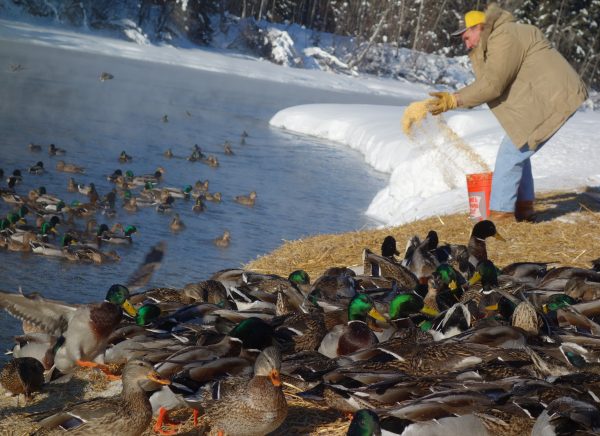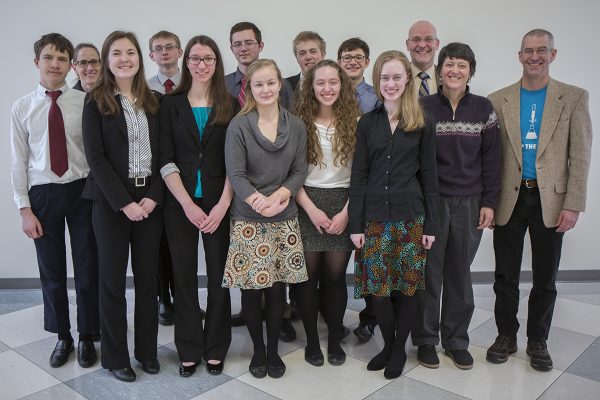
Syun-Ichi Akasofu works in his office in the International Arctic Research Center.
As another major rainstorm hit California in February, downtown San Francisco surpassed its normal rain total for an entire year. Reservoirs in the high country were spilling over. So ended a five-year drought in the state that some people attributed to human-caused climate change.
Those pictures of dried-up California lakes bothered Syun-Ichi Akasofu, who recently gave a talk, “The Forthcoming Ice Age,” at the University of Alaska Fairbanks. He thinks we humans are perhaps living in a period of warmth between cold periods, and we consider it normal. Mankind’s effects on climate, he said, are a minor act in a much grander play.
Akasofu, who an Anchorage Daily News reporter a decade ago called “Alaska’s best known climate-change skeptic,” is now 86. Every weekday, he walks into the rear entrance of a building with his name on it (home to the International Arctic Research Center) and works in his modest partitioned space until early afternoon.
He came to Alaska from Japan in 1958 to study the aurora. He became a worldwide expert, and transitioned to people-and-budget management as director of the Geophysical Institute and later the International Arctic Research Center. He was essential in the birth of the latter, now a major UAF institution, by bringing in funding from Japan in the late 1990s.
Since he was a boy, Akasofu has been a contrarian, finding himself looking for an alternative explanation when many people agree on an unproven notion. He has spent many hours of his retirement looking for cracks in the argument of the importance of humanity’s role in global warming, one of the noisiest debates of his time.
Upon reading of the drought-ending rains in California, Akasofu said that state is experiencing natural changes that come and go in cycles. His pet peeve is “instant climatology,” in which he says people base an argument on just a few decades of data.
The time period one chooses, he said, support or refute a favorite argument. From 1940 to 1975, he pointed out, the average temperature on Earth decreased 0.2 degrees F, making some believe a new ice age was coming.
Global warming from 1975 on is real, he said, and he agrees that carbon dioxide levels are increasing dramatically. But he thinks warming world temperatures could be mainly Earth’s natural rebound from the Little Ice Age, a period from A.D. 1200 to 1850 when during some winters the Thames River froze in London and so did New York Harbor.
Any measure of change has to begin at some time period. Akasofu wonders why scientists like Michael Mann used the year A.D. 1000 to initiate his famous “hockey stick” graph, which shows incredible warming in the past 80 years.
“There’s a big baseline problem,” he said. “You can draw a line at (A.D. 1000) to the present to promote the hockey stick, but if you go back 500,000 years, there were four ice ages, and we’re on the cusp of another.”
He showed a graph of warmth that follows ice ages, noting that we are perhaps at the cyclical peak of heat that has happened with regularity in the planet’s history.
If he is right, we are living in a sweet spot, warm enough for human comfort, embedded in a pattern we have little to do with. His line that follows the temperature swings involved with the major ice ages has the world’s average temperature increasing until about 2035, when it drops to about the same level as 1990.
“The public should be aware that we are at the peak of this change (the warm recovery from a past ice age),” he said. “We are luckily at the peak of an impulsive heat input.”
As for today being different than yesterday, he said, it is the natural state of things.
“Climate change is happening all the time,” he said. “We should respect nature and its power.”
Since the late 1970s, the University of Alaska Fairbanks’ Geophysical Institute has provided this column free in cooperation with the UAF research community. Ned Rozell is a science writer for the Geophysical Institute.
















































